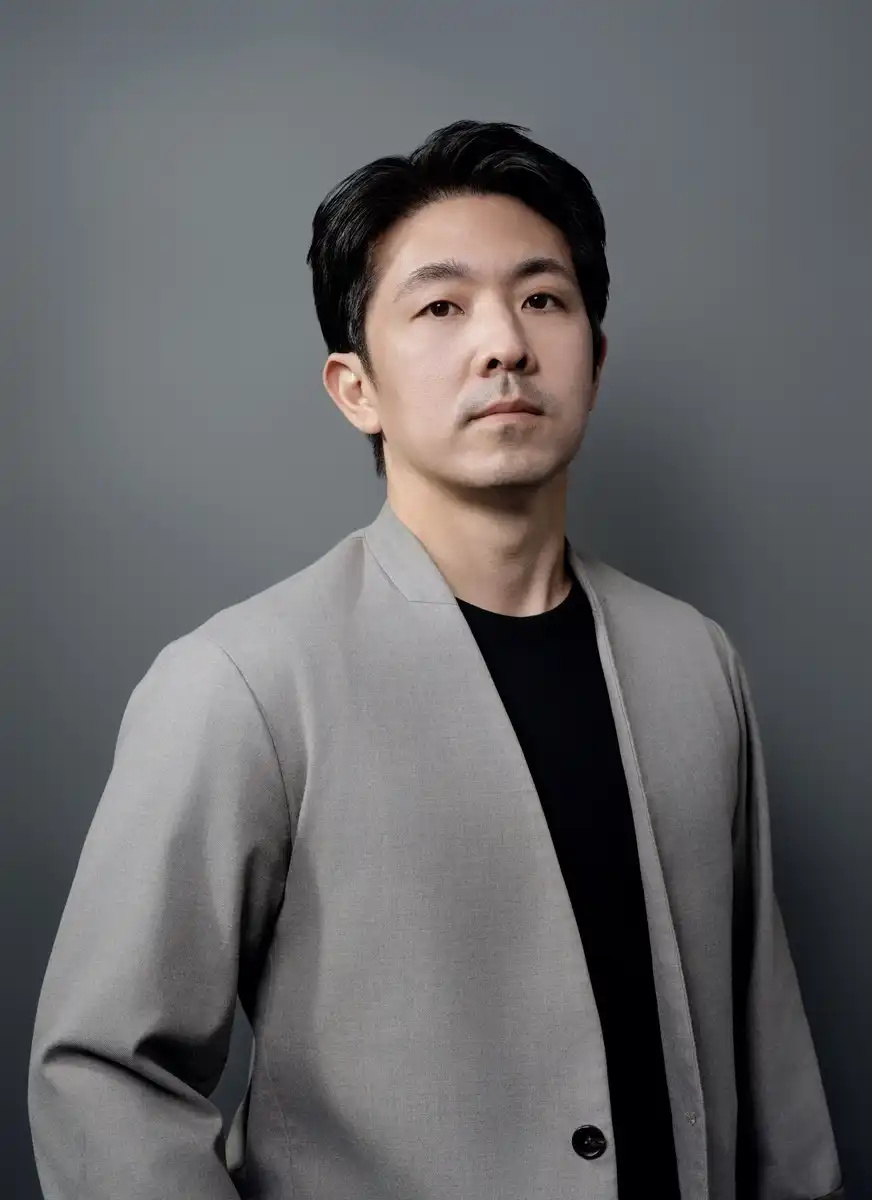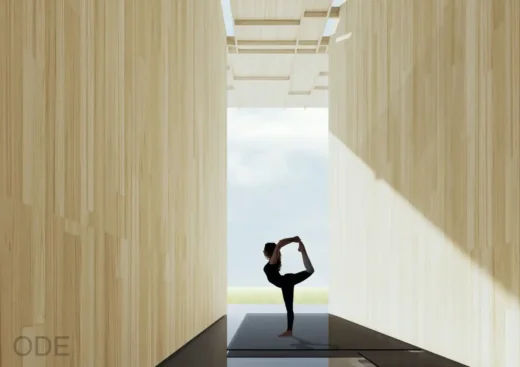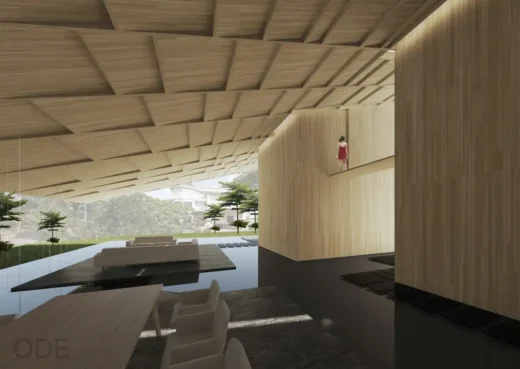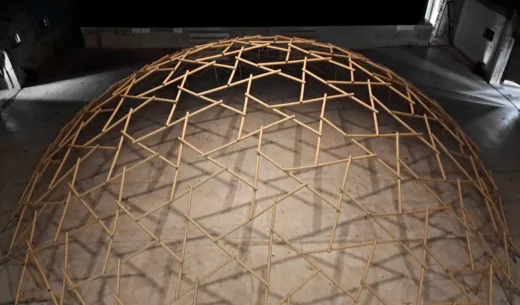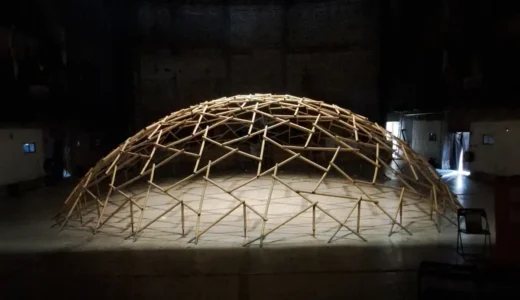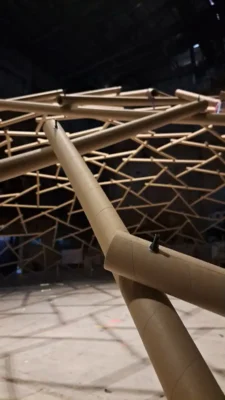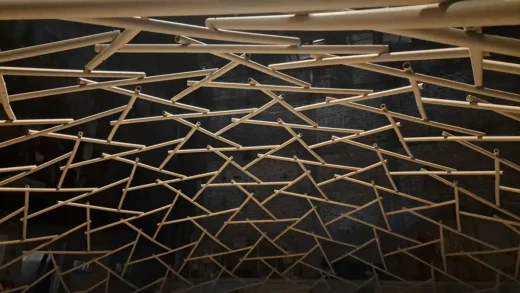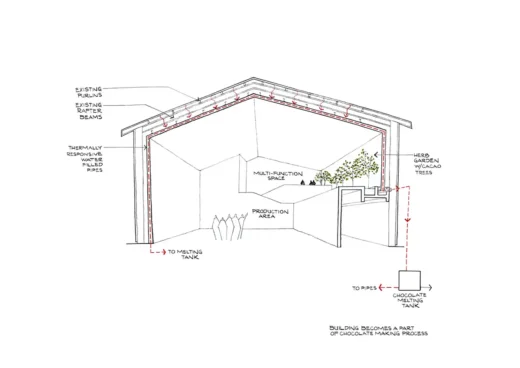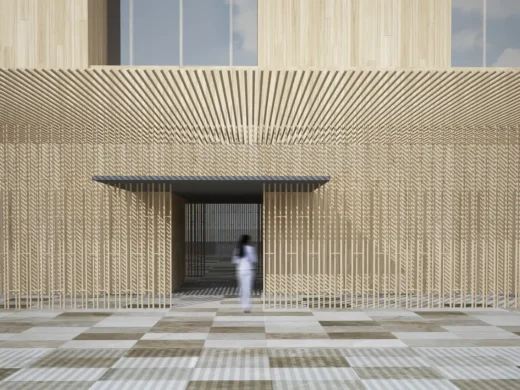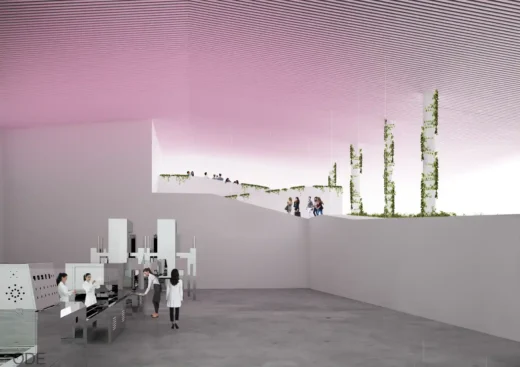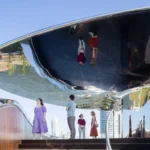Rethinking material intelligence in contemporary architecture
Rethinking Material Intelligence in Contemporary Architecture
27 May 2025
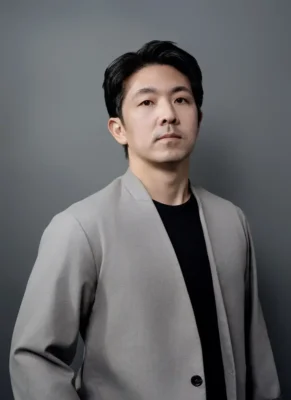
All images courtesy of Kody Kato / Office for Design Evolution (ODE)
Material experimentation emerges as a technical necessity and expressive medium in the evolving dialogue between architecture and environmental responsibility. Architect Dr. Kody Kato, founder of the Office for Design Evolution (ODE), has spent the last decade investigating how unconventional and often overlooked materials can support new modes of spatial experience, especially when deployed through interdisciplinary methods rooted in engineering, biology, and data-driven systems.
What unites Kato’s recent works is not a single material or aesthetic, but a shared ambition: to perceive all materials as living systems—responsive, adaptive, cultural, and deeply embedded in their context. Whether transforming industrial heat into a resource, using recycled materials as tension-based structures, or allowing humidity to shape space, these projects challenge the nature of buildings. They propose a new kind of intelligence—one that is physical, social, environmental, and performative. In doing so, Kato’s architecture resists rigidity for relevance for relevance, allowing material to become both the medium and the message. “I don’t see materials as static matters—we work with them as systems of behavior. They store memory, respond to climate, transmit energy, and shape how we move through space. Architecture begins when we start to understand materials in new ways”, says Kody Kato
Though varied in scale and form, each of Kato’s projects shares a common thread: they use architecture to explore how materials can perform, communicate, and respond. From the tensile lightness of folded paper in Beyond Surface, to the thermally activated skin of the Cocoa Craftsman Factory, to the moisture-adaptive design of the Hygroscopic House, and the memory-embedded earth columns of Liberated Memories, every project tests the boundaries between nature and structure. Together, they reveal Kato’s belief that materials are not just components—they are systems that hold energy, culture, and intelligence, capable of shaping buildings, behavior, and awareness.
Kato’s installation, Beyond Surface, reimagines the structural capacity of paper, specifically Takeo Tela from G.F. Smith, through a tensile canopy composed of over 5,500 interlocking sheets. Suspended from 16 vertical supports without adhesives or mechanical fasteners, the system creates a responsive environment where light, color, and tension define space. The joinery strategies—merging origami, wood carpentry, and structural behaviors over time—reflect an ethos of ephemeral precision: a structure that challenges conventional thinking about materials in relationship to the environment and the local context.
Other projects from ODE extend this exploration at various architectural scales. The RF Project uses recycled tubular elements to reinterpret ancient Chinese reciprocal frames as lightweight, self-supporting spatial systems. With a span of 14 meters and weighing just 230 kilograms, the structure exemplifies low-carbon ingenuity without sacrificing formal clarity. Meanwhile, Liberated Memories (2010) employs an earth-based composite from reclaimed soils and ashes in rural Hawai‘i, turning sediment into structure and memory into
material. Its vertical columns double as geological archives, shifting the act of construction into one of remembrance and ritual.
Material performance, however, is not only structural. In Malaysia’s Cocoa Craftsman Factory, heat, color, and production cycles become architectural elements. Pipes beneath a solar-exposed roof turn pink when temperatures reach chocolate-melting thresholds, creating a direct environmental feedback loop within the factory’s chocolate-making operations. Similarly, the Hygroscopic House adapts to its humid tropical context using moisture-absorbing materials, passive nocturnal cooling, and airflow strategies modeled on biological systems. Both projects prioritize process over product, where energy, air, and interaction drive the design of the space.
“Materials are not just what we build with—they’re how we think,” says Kato. “They embed values, behaviors, and feedback. When we design through materials, we design relationships.”
Together, these works reflect ODE’s commitment to design as an open system, where innovation is measured not in aesthetics alone, but in how spaces perform, adapt, and resonate with their context.
Kody Kato founded the Office for Design Evolution (ODE), an international architecture studio based in Kuala Lumpur. His interdisciplinary approach, coined “Creative Engineering,” merges architecture, material science, biology, and computational design. His work has been recognized by ArchDaily, the London Design Awards, and the British Encyclopedia, and is archived in the Singapore National Library.
Comments on this Rethinking Material Intelligence in Contemporary Architecture article are welcome.
Building Articles
Nancy and Rich Kinder Building Houston, USA
Design: Steven Holl Architects
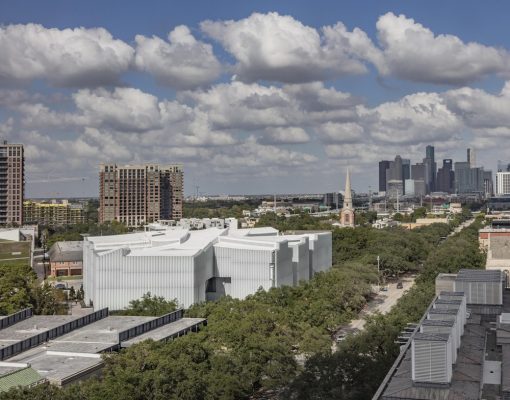
photograph © Richard Barnes, courtesy of the Museum of Fine Arts, Houston
Comments / photos for the Rethinking Material Intelligence in Contemporary Architecture page welcome

